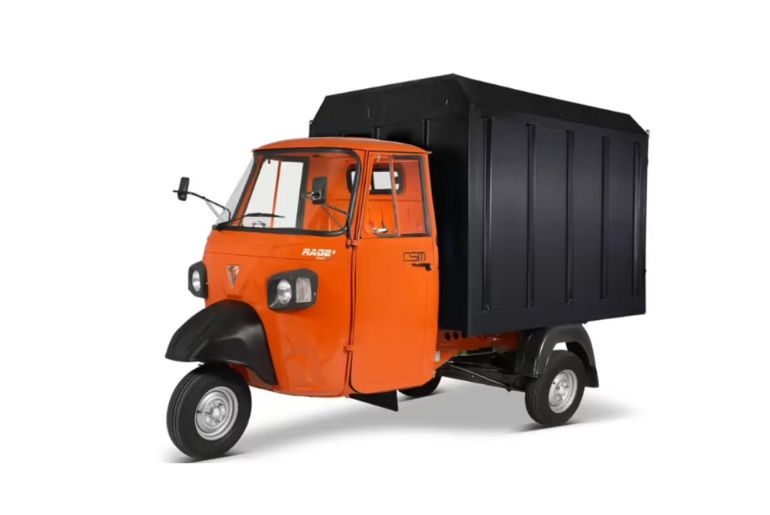The electric vehicle (EV) industry in India is currently undergoing a pivotal phase. While big automakers struggle with their supply chains and shifting regulations, smaller companies are quickly establishing their own niche by reacting to new regulations and meeting client needs with pertinent localisation. Omega Seiki Mobility (OSM) is standing out among them. It has been gradually making a name for itself in the rapidly growing commercial EV industry, which is crucial to the transformation.
Over 5.3 lakh EVs were sold in India in 2023, accounting for 54% of all EV sales—a market in which OSM leads. OSM is in a prime position to spearhead this shift, as the EV market in India is predicted to increase fivefold by FY2030, with two- and three-wheelers accounting for 80% of that growth.
In a recent statement, Union Minister Nitin Gadkari stated that he anticipated electric car pricing to catch up to those of gasoline-powered vehicles in six months. This suggests that even more accessible electric vehicles will be available in the future. Businesses like OSM are in the limelight as a result of new government incentives and a push for local production.
Making for India by utilising the “Make in India” strategy
Under Prime Minister Narendra Modi’s Make in India campaign, companies that pledge to produce locally and create jobs would benefit from India’s new EV policy, which includes import duty benefits. Instead of depending on imports, this shift aims to develop native industry.
OSM is completely in line with India’s new EV strategy, which commits to domestic production and employment development in order to take advantage of import duty benefits. The company maintains control over quality, cost, and delivery schedules thanks to its four state-of-the-art production facilities: three in Faridabad, one in Chakan, and a new site in Jafza, Dubai.
By localising more than 85% of its electric three-wheeler lineup, OSM has reduced its dependency on imports and strengthened its supply chain. A robust network of local talent and Indian component suppliers underpins its growth and serves as the foundation for its independent manufacturing approach.
OSM has introduced specially designed vehicles with an emphasis on commercial EV markets where electric three-wheelers offer the greatest value: urban cargo, logistics, and shared mobility. Flagship products like Rage+, Stream, and Stream City are perfect for fleet operators and micro-entrepreneurs since they are optimised for low total cost of ownership (TCO), high uptime, and battery swapping.
While many local and international businesses continue to struggle with localisation issues and shortages of materials, OSM has maintained its lead with little publicity. It has been able to avoid the disruptions that larger competitors have experienced thanks to its plants in Faridabad and Chakan, high levels of localisation, and solid relationships with domestic suppliers. Actually, OSM’s updated 1-tonne electric vehicle is currently undergoing final testing and will shortly go on sale. This is a well-planned approach, not just a matter of fulfilling requirements.
OSM’s strategy: realistic and grounded
OSM has concentrated on a sector where electric vehicles offer definite benefits: commercial logistics and transportation, rather than pursuing individual EV purchasers who frequently worry about charging infrastructure and range restrictions.
E-commerce package delivery and transportation in cities and surrounding areas are increasingly being handled by electric three-wheelers. With electric versions, the designers aren’t attempting to create a statement. All they want is to reduce fuel expenses, steer clear of ongoing repairs, and increase earnings. India’s EV industry is expected to grow five times to reach 15% by FY30, according to recent projections. Two- and three-wheelers will be responsible for the majority of this expansion. OSM works in that area. In India, commercial three-wheelers are currently setting the standard for EV adoption.
Luxury showrooms aren’t where India’s EV transition is occurring. Smaller towns and cities all around the nation are experiencing it, but particularly in the northern and southern areas like Karnataka, Tamil Nadu, and Andhra Pradesh. Although cities like Lucknow, Bhubaneswar, Patna, and Vijayawada may not have large fast-charging infrastructure, their small distribution networks require reliable vehicles.
OSM established dealer networks and after-sales setups in the interior parts of India after realising this. The expansion of smaller towns will propel India’s green mobility movement outside of urban areas. OSM’s cars fit in perfectly with these semi-urban settings because they are affordable, useful, and essential for everyday requirements.
The fact that OSM has been facilitating micro-entrepreneurship is one of its underappreciated benefits. Low ownership costs make it possible for thousands of people to enter the logistics and transportation industries without having to pay large sums of money up front.
An OSM car is more than simply a technological advancement for delivery riders and gig workers; it’s a source of financial stability. These cars’ lower operating costs increase small firms’ and independent contractors’ profits. The governments’ goals of encouraging greener transportation and fostering economic growth and inclusivity are being realised by electric vehicles. This is not a futuristic concept. It is evident in India’s congested and bustling streets, where three-wheelers make up more than 65% of all registered electric vehicles in Delhi.
With its interchangeable batteries, the Stream City is revolutionising last-mile urban mobility. Fleet operators need to drastically reduce downtime, and swapping only takes five minutes. The Delhi-NCR area now has more than 400 battery swap stations, demonstrating the usefulness, scalability, and effectiveness of this ecosystem.
OSM has established itself as one of India’s most reputable commercial EV competitors thanks to its Make in India EV manufacturing, pertinent product design, rural development, and carefully considered market fit. Companies who have developed domestic systems and models targeted at Bharat will succeed as the EV industry expands more quickly and regulations tighten in the upcoming years.

